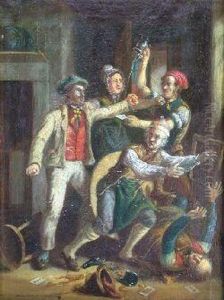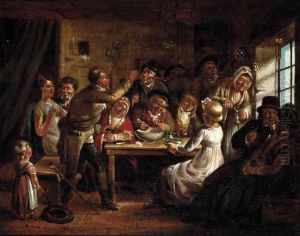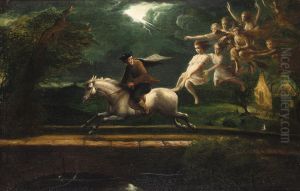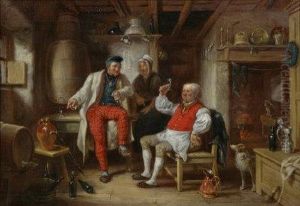William Carse Paintings
William Carse was a Scottish painter active in the early 19th century, primarily known for his genre scenes, which vividly depicted everyday life in Scotland. Born in 1800, Carse was part of a family of artists, with his brother, Alexander Carse, also gaining recognition for similar subject matter. This familial connection undoubtedly influenced William's artistic direction, though both brothers developed their unique styles and thematic focuses within the genre painting tradition.
Carse's life, like many artists of his time, was not well-documented, and much of what is known about him comes from the study of his works and their circulation. He lived during a period of significant change in Scotland, a time that saw the country transitioning from its traditional rural, agricultural society to a more industrial and urban one. This shift provided rich material for artists interested in capturing the essence of Scottish life, with Carse and his brother among those who took up this challenge.
Throughout his career, William Carse exhibited a keen interest in the social customs, occupations, and daily activities of his fellow Scots. His paintings often featured lively scenes of markets, fairs, and street life, rendered with attention to detail and a vibrant palette that brought the dynamism of his subjects to life. Unlike his brother, whose work sometimes leaned towards the sentimental or romanticized, William's paintings are noted for their more straightforward representation of Scottish life, offering a window into the world of the early 19th century with a sense of immediacy and authenticity.
Tragically, William Carse's life was cut short when he died in 1845 at the relatively young age of 45. Despite his premature death, Carse left behind a body of work that remains of interest to historians and collectors alike. His paintings continue to be appreciated for their historical value and their contribution to the genre painting tradition in Scotland. They not only depict the everyday life of Scots during a pivotal period in their history but also reflect the broader changes and continuities in Scottish society and culture during the 19th century.



